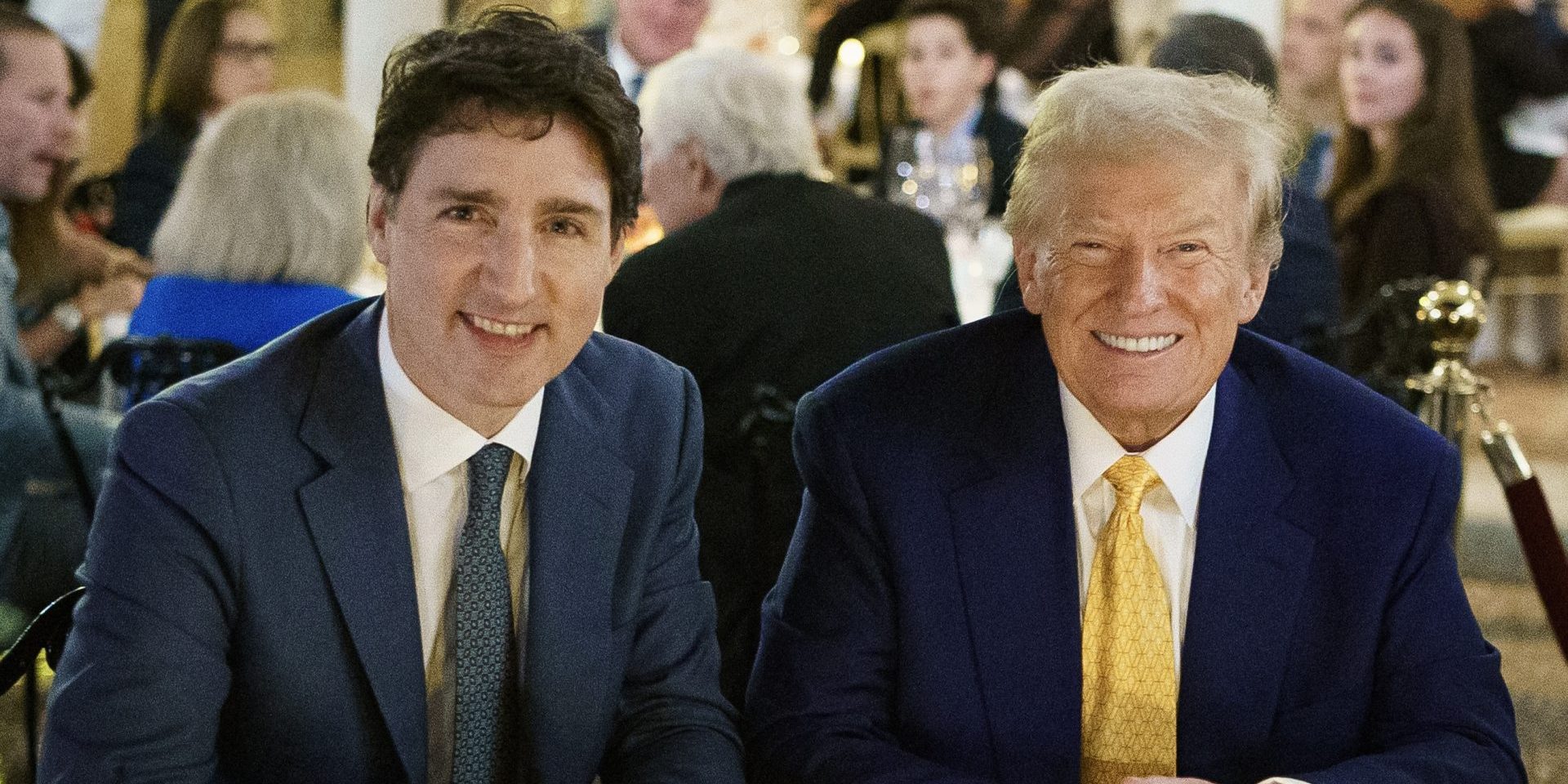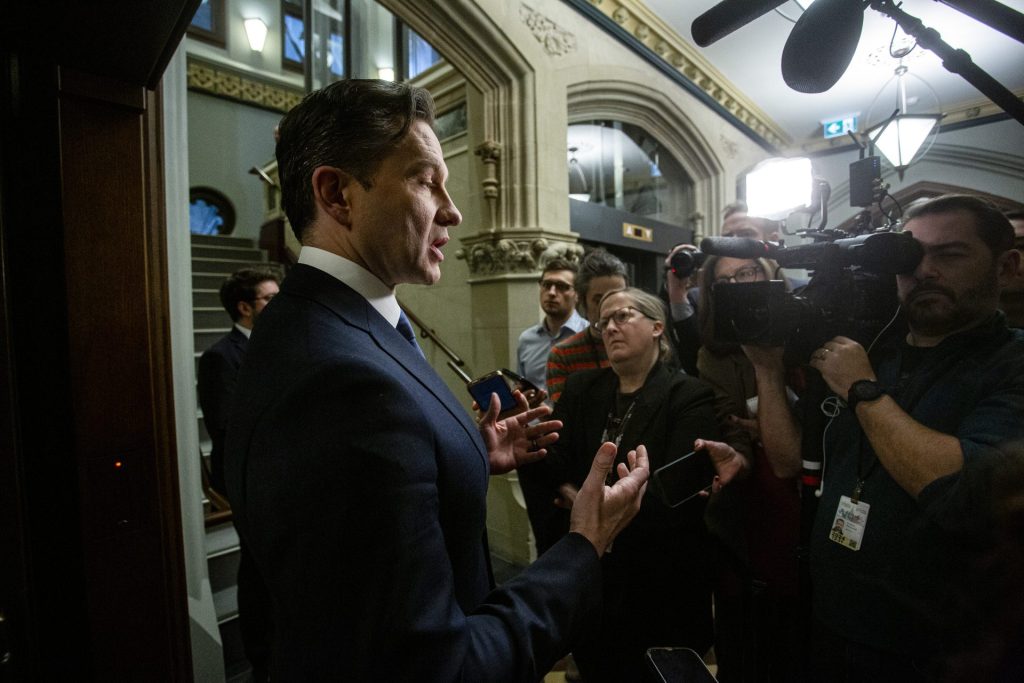Canada-U.S. trade, and more: by the numbers

Canada must diversify its export markets and reduce its reliance on a single trading partner in the United States if it is to weather threats like those made by U.S. president-elect Donald Trump to impose tariffs on all imports from the country, according to some industry leaders and a political studies professor.
Trump took to his social media platform Truth Social late last month to threaten that 25 per cent tariffs would be imposed on all imports from Canada and Mexico until “such time as Drugs, in particular Fentanyl, and all Illegal Aliens stop this Invasion of our Country!”
Canada sent $592.7-billion worth of exports to the United States in 2023, and received $484-billion in imports from the country, according to Statistics Canada. Energy products, such as oil and gas, and motor vehicles and parts were the primary exports, while the latter was also a major import from the United States alongside consumer goods.
Global Affairs’ chief economist’s most recent monthly trade report, for September 2024, showed goods exported to the United States constituted $48.66-billion of the $63.88-billion total that month, or 76.17 per cent. Imports from the United States accounted for $40.37-billion of the $65.15-billion total during the same period, or 61.96 per cent.
The Canadian export market reliance on the United States causes problems when threats like those made by Trump are made, said Charles-Étienne Beaudry, professor in political studies at the University of Ottawa and author of Radio Trump: How he won the first time. He recommended that Canada have a long-term plan to grow other export markets so that the United States only constitutes approximately 50 per cent of the total.
“We need to diversify our economy,” he said. “If you look at Silent Surrender, which is a book from 1970, Kari Levitt wrote that Canada had an economy that was too much dependent on the U.S. economy, so it puts us in a situation that we saw [last month] where a newly elected president is able to threaten us that way because he knows that we are weak because our economy is too dependent.”
U.S. agents patrolling the northern border with Canada seized 4,047 lbs—or 1,835 kg—of drugs destined for the United States between January and October this year, of the bulk was cannabis and only 34.06 lbs—15.75 kg—was fentanyl. That figure, however, was much higher than the 1.85 lbs—839 g—of fentanyl seized for the whole of 2023.
Fentanyl seizures at the Canadian border—from all ports of entry, not just those with the United States—were 4.4 kg for the first two quarters of the 2024-25 fiscal year, up from the 496 grams in 2023-24. The RCMP told CBC News in August that domestic production of fentanyl had increased in recent years, while the same outlet reported a Health Canada briefing note stating that “it is widely believed that excess product is being exported to lucrative international markets.”
Still, the fentanyl seized at the U.S. border on the way in from Canada is far lower than the amount seized coming in from Mexico. Agents at the country’s southwest border seized 2,132 lbs—967 kg—of fentanyl between January and October.
So, too, are the number of migrant encounters, which is the term U.S. Customs and Border Protection uses for apprehensions, expulsions, and inadmissible entrants. On the southwest border, agents had 957,458 such encounters between January and October, while there were 21,156 encounters at the northern border.
The vast majority of these encounters were in the Swanton Sector, which covers the Vermont and New Hampshire borders with Quebec, and part of the New York border with Quebec and Ontario.
Beaudry said the problem with Trump’s threat was that it is based on “a lie.”
“The modus operandi of Trump is to threaten people to be in the position of strength in the negotiation. He does that all the time,” he said. “So as for our reaction, I don’t think that it is a good idea to concede this to Trump.”
Less than a week after Trump issued his threat, Prime Minister Justin Trudeau (Papineau, Que.) travelled to Trump’s Mar-a-Lago resort in Florida to meet with the president-elect in person. Two days later, Public Safety Minister Dominic LeBlanc (Beauséjour, N.B.) told CBC News that the government planned to add more drones, helicopters, and personnel to assist with border patrols.
Elsewhere, the federal government has sought to reinforce a “Team Canada” approach to the tariff threat. Trudeau held a virtual meeting with provincial and territorial premiers on Nov. 27, followed by a Dec. 3 in-person meeting with Conservative Leader Pierre Poilievre (Carleton, Ont.), NDP Leader Jagmeet Singh (Burnaby South, B.C.), Bloc Québécois Leader Yves-François Blanchet (Beloeil-Chambly, Que.), and Green Party Leader Elizabeth May (Saanich-Gulf Islands, B.C.).

Despite this, some of the party leaders have already accused one another of making the negotiating position easier for Trump. Poilievre, who noted in a scrum shortly after the leaders’ meeting that tariffs would be as damaging for American businesses and consumers as for Canadians, took to Question Period on Dec. 4 to declare that “this weak prime minister has lost control of everything. He’s lost control of the borders, lost control of immigration.”
“I understand why President Trump wants to take Canadian jobs, but why is the Prime Minister trying to help him do it?” Poilievre said.
Prior to Question Period that day, Trudeau said it was important for Canadians to pull together, then accused Poilievre of being incapable of doing so.
“There is a tradition in Canada that when times are tough, when there’s a moment of crisis or when we’re threatened, Canadians pull together. We step up, we go across partisan lines and we defend Canada,” he said. “It seems increasingly clear that that is not something Pierre Poilievre is able to do.”
Meanwhile, an industry that has already been affected by U.S. tariffs spoke about the challenges during a House International Trade Committee meeting on Dec. 2.
Canada and the U.S. have been locked in a softwood lumber dispute since the 1980s, with the latter accusing the former of unfairly subsidizing the local industry and applying retaliatory tariffs. Most recently, the U.S. increased the tariff rate on Canadian softwood lumber imports from 8.05 per cent to 14.54 per cent on Aug. 19.
“The looming threat of further incoming increases are a devastating blow to Canada’s forestry sector,” Lana Payne, president of Unifor, told the committee. The union says that it represents 24,000 forestry sector workers. “We fear we will see workplace closures as a result of these continued increases, and this is without contemplating the additional 25 per cent across the board tariff threatened by president-elect Trump, which if imposed, would cause major problems in this sector.”
“The fundamental challenge we face is the overwhelming imbalance of power in our trade relationship with the United States. No amount of finger-pointing or blame-shifting here in Canada will change the fact that the U.S. controls all the chips in this dispute at the moment.”
Derek Nighbor, president and CEO of the Forest Products Association of Canada, told the committee that negotiations would be made more difficult with the knowledge that the Canadian industry was facing difficulties. Another consequence of the tariffs, he said, could be increased building costs within the United States, which would in turn drive down demand for the products.
“Depending on where the Trump tariffs go, our industry is very reliant on a strong U.S. homebuilding network to drive our businesses, and we are expecting, getting into next year, things are starting to look better in terms of U.S. housing starts,” he said. “But if we have broad-based inflation again in the U.S. over the next couple of years because of big tariffs, that’s going to delay that.”
Kevin Lee, CEO of the Canadian Homebuilders Association, said it would be important for Canada to increase its domestic capacity beyond raw materials.
“I think we really need to figure out what we can do to be less reliant on raw materials going to the States and finding competitive ways to create a stronger industry here in Canada that supplies Canada, supplies the United States, and also looks to other markets around the world that are going to need more lumber products as well,” he said.
Lee said an added risk of short-term difficulties in the local lumber industry was that it might not be able to meet subsequent periods of high demand.
“The biggest danger here would actually be a Canadian lumber industry that suffers so much that we see a shrinking of the Canadian lumber industry, and then when things pick up we don’t have the capacity in our own lumber industry to supply Canada properly and the opportunities south of the border,” he said.
NDP MP Blake Desjarlais (Edmonton Griesbach, Alta.), his party’s international trade critic, told the committee that he believed the tariff threats were a way for Trump to “create a positive surplus for himself.”
“Canada has a surplus, partly because of our great industries and how competitive we are, and we’re being punished for that. That’s inappropriate, that’s not an OK thing to do, that’s not what friends do to other friends,” he said. “That’s why I agree with the Team Canada approach, I think that we do need to see that. It needs to put front and centre what is valuable for Canadians, which is our jobs. The union jobs are the most valuable and important piece of the puzzle.”
sjeffery@hilltimes.com
The Hill Times





 LICENSING
LICENSING PODCAST
PODCAST ALERTS
ALERTS













